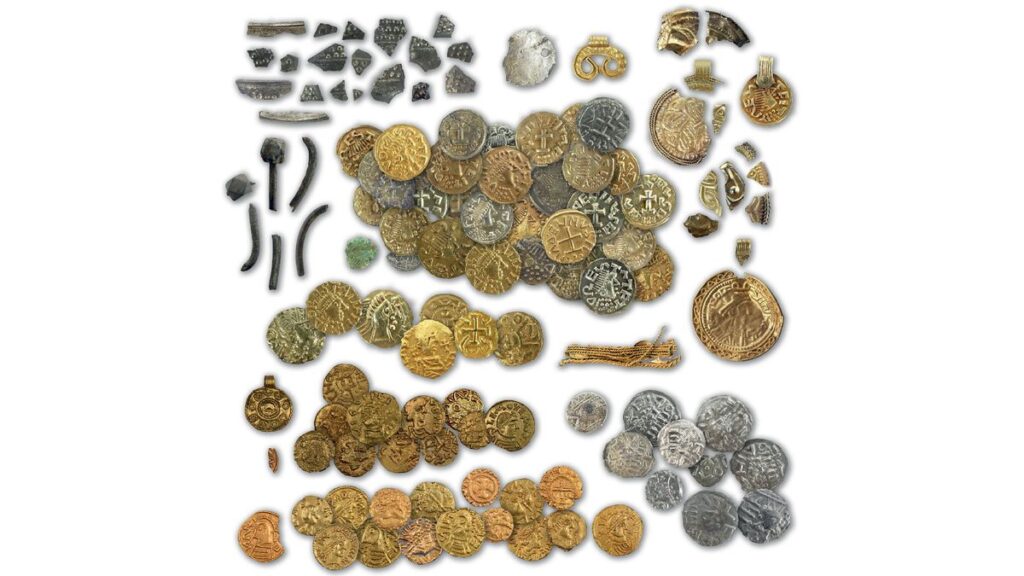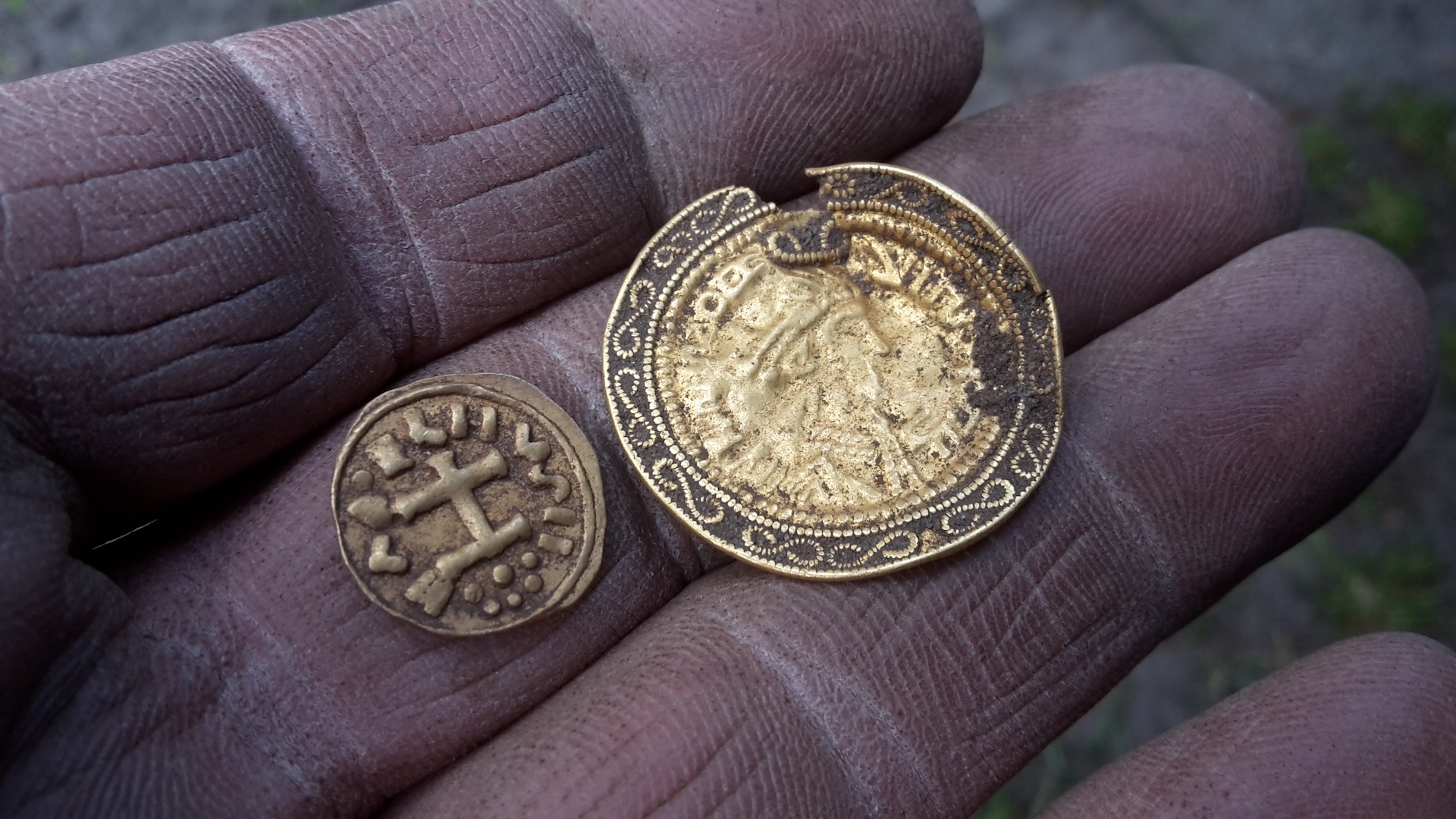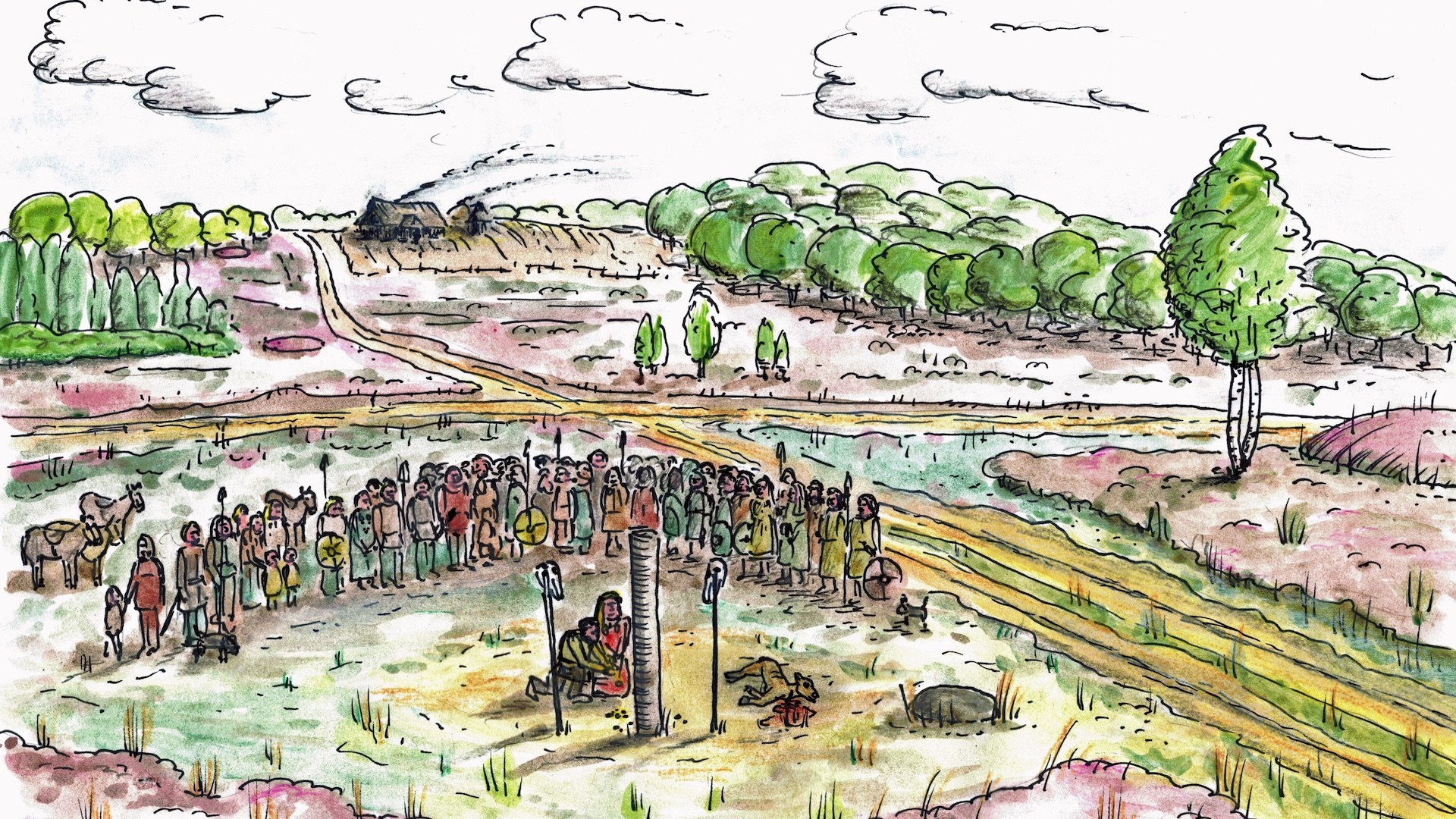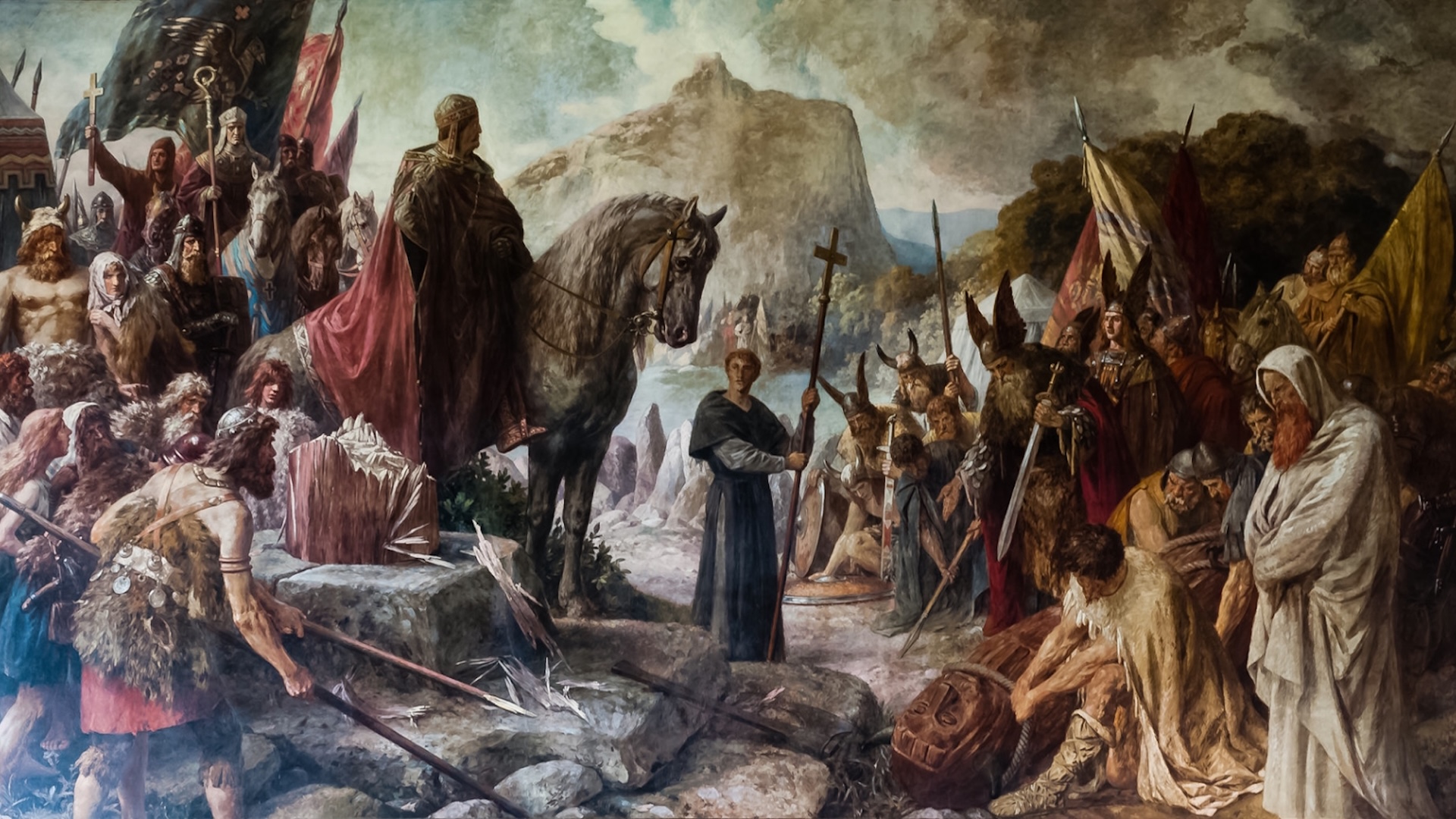Three early-medieval stashes of gold and silver pieces, alongside hundreds of coins, have been discovered at a “cult site” in the Netherlands. The 1,300-year-old finds may be “devil’s money” — coins or valuable treasures offered to pagan gods — that were opposed by early Christian missionaries in the region, a new paper reports.
“The people here were undoubtedly Germanic,” said study lead author and excavation leader Jan-Willem de Kort, an archaeologist at the Cultural Heritage Agency of the Netherlands. The site was on land traditionally seen as Saxon territory, but the locals may not have called themselves Saxons. “Probably this is more a term by which outsiders referred to the pagans as a group,” he told Live Science.
The finds were made near the Dutch village of Hezingen, about 80 miles (130 kilometers) east of Amsterdam and near the border with Germany. This region was just north of the Lower German Limes, which defined the limits of the Roman Empire until the Germanic invasions in the fifth century. According to de Kort, some local people had previously served as allied soldiers (“auxilia” in Latin) to defend the Roman frontier. But the Romans had been driven from the region hundreds of years before the site was used for pagan cult offerings in the sixth and seventh centuries.
Related: 1,200-year-old pagan temple to Thor and Odin unearthed in Norway
Metal detectorists first found gold and silver coins at the site in 2020 and 2021, de Kort said. The detectorists then told the local authorities, who coordinated with archaeologists to excavate the open-air site ahead of a planned landscaping project there.
The monetary value of the treasure has yet to be determined, but it’s probably significant. The finds include more than 100 gold and silver coins of various types; gold jewelry, including pendants and earrings; and large pieces of gold and silver, some of which may have been hacksilver (or “hacksilber”) that was valued as money for its weight. The researchers also found geochemical evidence in the soil showing that bones had decayed there, which hints at animal sacrifices.
Several of the coins are exceedingly rare. Some were made at various mints throughout the Frankish Empire in the first half of the seventh century. One piece of jewelry is decorated in the distinctive Germanic animal style, while another features a portrait reminiscent of Roman jewelry, according to the study, which was published Dec. 24, 2024, in the journal Medieval Archaeology.
De Kort said the treasure seems to have been buried in several deposits, which implies it was a “cult site” where offerings to pagan gods were made. Although it’s unclear which gods were worshipped there, one possibility is a form of Wodan, the original Germanic version of the Norse god Odin, he said.
Pagan offerings
Such pagan offerings seem to have been relatively common in the pagan Germanic lands at this time, de Kort said. They were opposed, however, by early Christian missionaries in the region, who called them “devil’s money.” According to a ninth-century copy of a “baptismal promise” for Saxons converting to Christianity, they were required to forswear Wodan and other gods and to renounce the offering of “diobolgeldæ,” or “devil’s gold” — apparently a Latinization of a Germanic word.
De Kort said the excavations near Hezingen had also revealed a line of 14 postholes aligned to the east and west; some of the metal offerings were found in the holes, although no posts now remain. The central posts may also have featured a “holy pillar” (a “stapol” in the early Germanic language) that early Christian sources report were used by pagans to represent their gods. The alignment suggests the line of posts was related to the spring and autumn equinoxes, and may have served to mark the beginning of these important farming seasons, he said.
According to the study, the offerings may have been made to the holy pillar at sunrise and sunset on the equinoxes, possibly to ask the gods to grant fertility to the nearby farmlands.
The spread of Christianity northward and eastward from the Frankish territories may have triggered a more pronounced emphasis on old traditions and forms of pagan worship at the site, the authors added.





